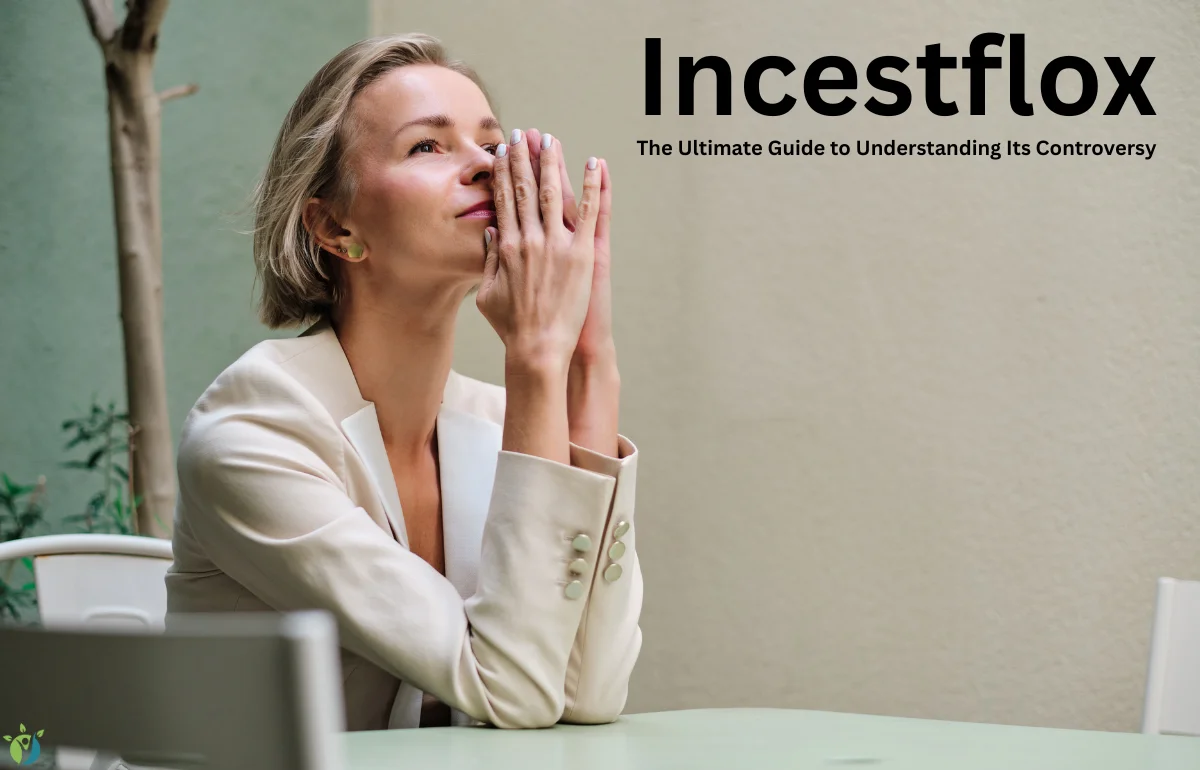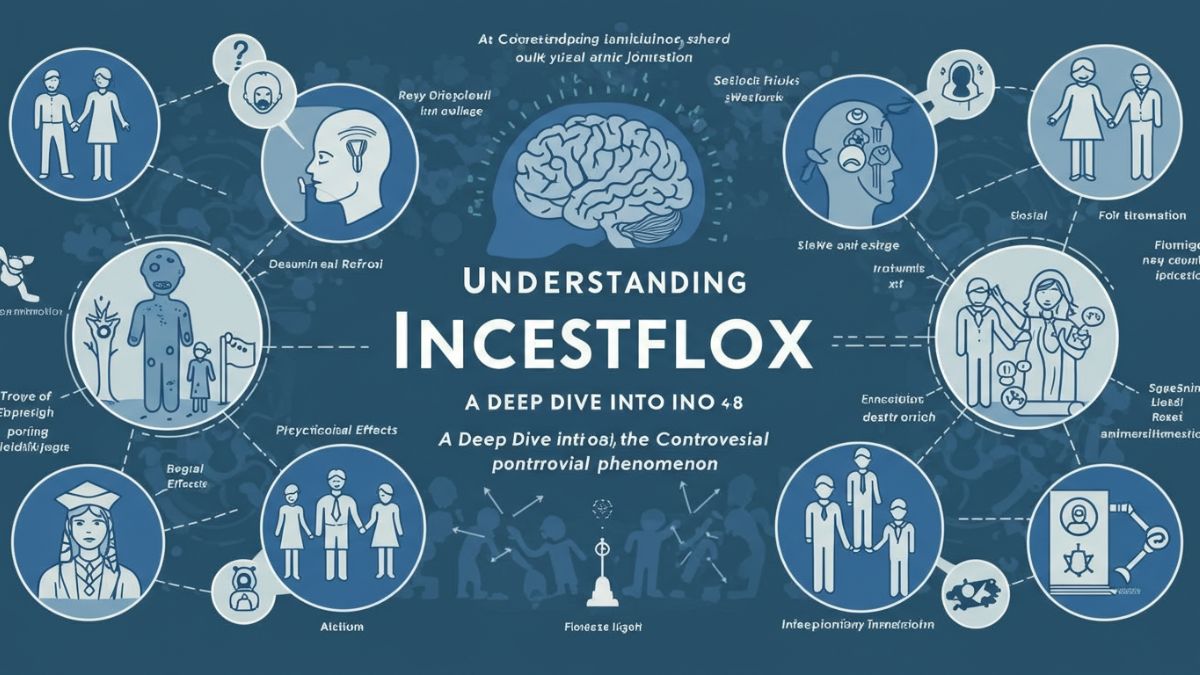Introduction
Incest, the practice of sexual relations between close family members, has been a taboo subject across nearly all cultures and societies throughout history. The term “incestflox“ appears to be a neologism, possibly combining “incest” with a suffix suggesting complexity or confusion (similar to terms like “paradox” or “influx”). While the exact meaning of “incestflox” is unclear, this article will explore the broader implications of incestuous relationships, including psychological, legal, genetic, and societal perspectives.
Given the sensitive nature of this topic, it is crucial to approach it with care, focusing on factual information, ethical considerations, and the well-being of individuals affected by such dynamics.
1. Defining Incest and Its Historical Context
What Constitutes incestflox?
Incest typically refers to sexual activity between individuals who are closely related by blood (consanguinity), though some definitions extend to step-relatives or adoptive family members. Common prohibited pairings include:
-
Parent and child
-
Siblings (full or half)
-
Grandparent and grandchild
-
Aunt/uncle and niece/nephew
Incest in History and Mythology
Incest has appeared in various historical and mythological contexts:
-
Ancient Egypt: Royal families, such as the Pharaohs, often practiced sibling marriage to preserve dynastic purity.
-
Greek Mythology: Figures like Oedipus (who unknowingly married his mother) highlight cultural anxieties about incest.
-
European Royalty: Intermarriage among nobles (e.g., the Habsburgs) led to genetic disorders due to inbreeding.
Despite these historical instances, most societies have developed strong prohibitions against incest, often rooted in religious, moral, and biological reasoning.
2. The Psychology of Incest: Causes and Effects
Why Does Incest Occur?
Several psychological and situational factors may contribute to incestuous relationships:
-
Power Imbalances: Abuse of authority (e.g., parent-child incest) is often about control rather than consensual attraction.
-
Isolation: In closed or highly insular communities, limited social interaction may lead to distorted relationship norms.
-
Trauma and Abuse: Victims of childhood sexual abuse may develop maladaptive coping mechanisms, sometimes repeating patterns in adulthood.
-
Genetic Sexual Attraction (GSA): Some individuals separated from their biological family early in life report intense attraction upon reunion, a phenomenon studied in cases of adoptees meeting relatives later in life.
Psychological Consequences
Incestuous relationships, particularly non-consensual ones, often result in severe trauma:
-
Guilt and Shame: Societal stigma can lead to deep emotional distress.
-
Identity Confusion: Victims may struggle with self-worth and interpersonal relationships.
-
Mental Health Disorders: Increased risk of depression, PTSD, and dissociative disorders.
3. The Genetic Risks of Inbreeding
One of the strongest biological arguments against incest is the risk of inbreeding depression, where offspring inherit harmful recessive genes.
Documented Effects of Inbreeding
-
Higher Mortality Rates: Studies show children of closely related parents face increased infant mortality.
-
Genetic Disorders: Conditions like hemophilia, cystic fibrosis, and congenital disabilities are more common.
-
The “Habsburg Jaw”: A famous example of inbreeding consequences in European royalty, leading to severe deformities.
Scientific Perspective
While first-generation incestuous offspring may not always show defects, repeated inbreeding exponentially increases genetic risks. Modern genetic counseling strongly discourages procreation between close relatives.
4. Legal and Societal Perspectives on Incest
Legal Status Worldwide
Laws on incest vary globally:
-
Illegal in Most Countries: Including the U.S., UK, and much of Europe (with harsh penalties for abuse cases).
-
Decriminalized in Some Places: Spain and the Netherlands do not criminalize consensual adult incest, though social stigma remains.
-
Cultural Variations: Some tribal societies have permitted certain forms of cousin marriage, but parent-child or sibling incest is nearly universally condemned.
Why Is Incest Taboo?
Several theories explain the near-universal incest taboo:
-
Westermarck Effect: Psychologists suggest that people raised together develop a natural aversion to sexual attraction (observed in kibbutz studies).
-
Social Stability: Incest avoidance helps form broader social alliances and prevents power monopolies within families.
-
Moral and Religious Condemnation: Major religions (Christianity, Islam, Judaism, Hinduism) explicitly forbid incest.
5. Case Studies and Modern Controversies
Notable Incest Cases
-
The Fritzl Case (Austria, 2008): Josef Fritzl imprisoned his daughter for 24 years, fathering seven children with her—a horrific example of incestuous abuse.
-
The Colt Family (USA, 2016): A brother-sister couple fought for legal recognition of their relationship, sparking debates on consensual adult incest.
Should Consensual Adult Incest Be Legal?
A growing (but still marginal) movement argues that criminalizing consensual incest between adults infringes on personal freedoms. Opponents counter that:
-
Power dynamics in families make true consent difficult.
-
Genetic risks to potential offspring necessitate legal restrictions.
This debate remains highly contentious, with no widespread legal shifts in sight.
6. Treatment and Support for Victims

Therapy and Rehabilitation
-
Trauma-Informed Care: Essential for survivors of incestuous abuse.
-
Family Therapy: In cases where incest stems from systemic dysfunction.
-
Legal Protection: Ensuring perpetrators are held accountable.
Prevention Strategies
-
Sex Education: Teaching healthy boundaries and consent.
-
Community Awareness: Recognizing signs of abuse.
-
Support Systems: Providing safe spaces for at-risk individuals.
Conclusion: Navigating the Complexities of Incestflox
The term “incestflox” may symbolize the tangled, paradoxical nature of incest—simultaneously condemned yet historically present, biologically dangerous yet sometimes emotionally compelling for those involved. Understanding incest requires a multidisciplinary approach, considering psychology, genetics, law, and ethics.
While consensual adult incest remains a fringe debate, the overwhelming focus must remain on protecting victims, preventing abuse, and mitigating harm. Society’s taboos exist for profound reasons, yet compassion and education are crucial in addressing this deeply sensitive issue.




